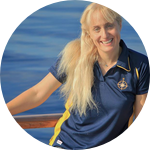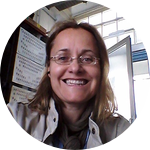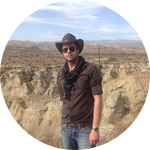About This Project
This project aims at designing a protocol for collection of samples relevant to surface processes on Mars for optically stimulated luminescence (OSL) and cosmic ray exposure (CRE) dating. The protocol will draw parallels from Martian analogues on the Earth but will be adapted to the limitations of a manned mission to Mars and the particularities of the Martian environment. The project will be implemented in Lanzarote, Canary Islands, which serves as a Mars analogue landscape.
Ask the Scientists
Join The DiscussionWhat is the context of this research?
Recent and continuing missions to Mars are showing that the Red Planet may be more geologically active than previously thought (Mitchell and Wilson, 2003). Aeolian dune migration (Geissler et al., 2012), glacier-sculpted landforms (Kargel and Storm, 1992) and liquid-water erosion (McEwen et al., 2011) clearly show that the atmosphere's weather and climate are substantial moderators of the Martian surface. As in Quaternary geochronology, it is important that ongoing Mars-surface processes be quantitatively assessed through numerical dating to deduce models of environmental change. Optically stimulated luminescence (OSL) and cosmic ray exposure (CRE) dating are the workhorses for the geochronometry of earth-surface processes.
What is the significance of this project?
The commitment of the world's largest space agencies to designing manned missions to Mars raises hopes that a new heroic age of space exploration is drawing near, tantamount to Project Apollo. Now, as then, geochronology will be an essential part of the extraterrestrial exploration. Already launched or planned robotic missions to Mars have already achieved (Farley et al., 2014) or aspire to achieve (Jain et al., 2006) in situ dating. Nevertheless, human intervention in sample collection is unparalleled. Current manuals on sample collection for OSL dating (Duller, 2008; Nelson et al., 2015) are restricted to terrestrial contexts only. This work will establish a protocol for future astro-geologists to undertake manual sampling on Mars for CRE and OSL dating.
What are the goals of the project?
The project will document field practices. The full spectrum of topographic and stratigraphic contexts will be explored. CRE dating is very sensitive to topographic obstructions in the vicinity of the sample site and, therefore, we will set up the necessary surveying equipment for topography depiction. OSL dating is sensitive to white light and, thus, special care should be taken when sampling in daytime. The proposed project is intended to instruct future manned missions to Mars and it will be adapted to the limitations associated with it, as well as to the idiosyncrasy of the Martian environment. The desert landscape of Lanzarore will serve as a Martian analogue. The resulting protocol will be published in a relevant journal.
Budget
The suggested budget concerns the travel expenses of a two-person crew to the Canary Islands. Airfare is an average estimate, as seen on online travel agencies at the moment. The proposed accommodation and subsistence costs ensure the minimum duration of stay (9 night) in decent conditions in order the project to be completed effectively. Part of the budget is allocated to acquiring (rent or purchase) the necessary field instruments (e.g. rock saw, rock drill) and surveying equipment, as well as to buy a space suite! Allowance is made for miscellaneous expenses (truck hiring, gas, equipment shipment, travel/equipment insurance etc), as well as for publication costs (review management, production etc). Finally, a flat rate payment is reserved for the field assistant. The sampling protocol/manual will be published in an open-access journal relevant to planetary geology.
Endorsed by
Meet the Team
Affiliates
Dr. Constantin D. Athanassas
The badlands of Alberta are one of the few captured memories from my early childhood in Canada. While growing up in Greece I became fond of the most celebrated space opera; the sparsely inhabited desert-planet scenery kept my early memories of dry and eroded terrains sharp, evoking the desire of exploration. I was therefore destined to become a geophysicist!
I have a BSc in Geology (University of Athens, 2002), an M.Phil in OSL dosimetry (University of Wales, 2005) and a PhD in Tectonics and OSL dating (University of Athens, 2010). I have worked as a research associate with the National Center for Scientific Research (NCSR) “Demokritos” (2011-2013), and then I completed a cycle (2013-2015) of postdoctoral research with the C.E.R.E.G.E., France, in cosmic ray exposure dating of rock surfaces. Very recently (2016), I earned an MSc degree in Geoinformatics from the National Technical University of Athens (NTUA). Currently, I am conducting further postdoctoral research in Geophysics with the NTUA.
I have led research projects in the circum-Mediterranean, the Middle East and the Atlantic Ocean, involving i) the neo-tectonic structure of the upper crust of SW Greece, ii) the structural evolution of the Santorini caldera through cosmic ray exposure chronometry, iii) OSL chronometric studies at the Canary Islands, iv) OSL-assisted paleo-topographic reconstructions in SW Greece, v) OSL dating of geomagnetic reversals, vi) OSL dating and spatial analysis of geometric lines in the Northern Arabian Desert and vii) OSL dating of megaliths in Iberia.
Lab Notes
Nothing posted yet.
Project Backers
- 3Backers
- 6%Funded
- $304Total Donations
- $101.33Average Donation


